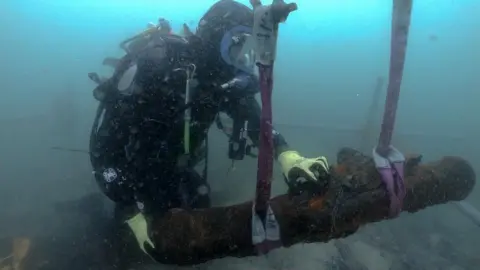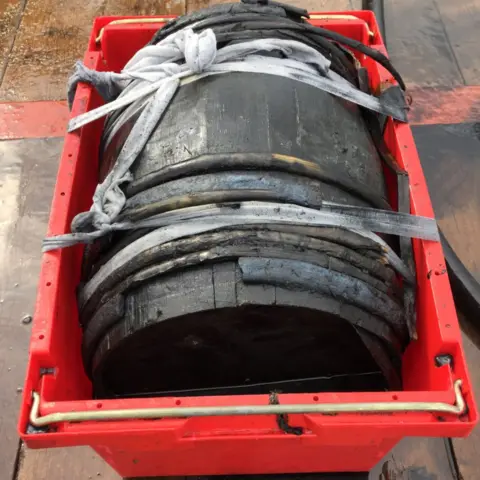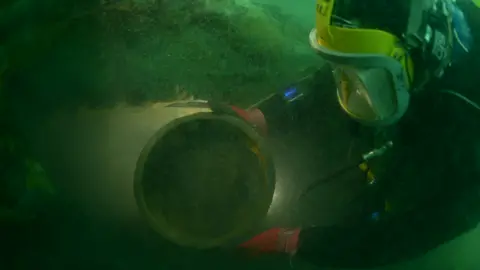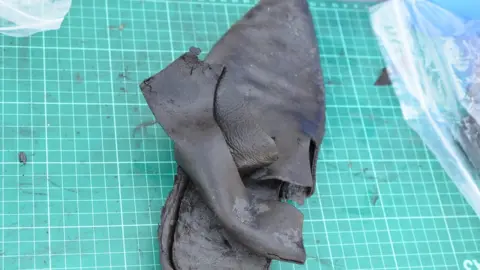HMS Invincible shipwreck's latest artefacts revealed
 Mike Pitts
Mike PittsMore artefacts from a warship that was wrecked in the Solent in 1758 have been brought to the surface.
HMS Invincible - built by the French in 1744 and captured by the British in 1747 - is believed to be one of the most significant warships ever built.
A second excavation is being carried out on the wreck site near Portsmouth.
Among the finds are a gunpowder barrel, swivel guns, woodworking tools and a sandglass used in calculating the ship's speed.
 Mike Pitts
Mike PittsThe first part of a major excavation of the Royal Navy vessel was carried out last year with divers recovering hundreds of items.
The project is being led by Poole's Maritime Archaeology Sea Trust (MAST), National Museum of the Royal Navy and Bournemouth University, and is officially endorsed by the Duke of Edinburgh.
 Mike Pitts
Mike PittsJessica Berry of MAST said some of the items retrieved from the seabed over the past month, during the second phase of the excavation project, were "absolutely immaculate".
"Digging right down, the objects are in perfect condition - it's like they're in an antique shop. Every day on site is hugely exciting and brings us something new."
Among the finds are six swivel guns, complete with their mounting. The team now believes the ship carried a complement of 12.
 Mike Pitts
Mike Pitts Mike Pitts
Mike PittsShe said the excavation was a "race against time" to rescue the artefacts as the sandbank recedes, exposing the wreck to the elements and attacks from shipworm and gribble.
Timbers, rope, a bottle of corked rum and a button from the Coldstream Guard regiment were discovered last year.
Archaeologists said the finds will help them build a clearer picture of what life was like for sailors more than 200 years ago.
Dave Parham, associate professor of maritime archaeology at Bournemouth University said: "The sheer scale of task which is growing as we're uncovering more of the previously unseen hull so we can make an assessment to plan a way forward."
 Mike Pitts
Mike PittsAfter conservation at MAST's centre in Poole, the artefacts will go to the National Museum of the Royal Navy in Portsmouth.
The 74-gun ship was lost when its rudder jammed and it ran aground on a sandbank between Langstone Harbour and the Isle of Wight, capsizing three days later. No lives were lost.
In 2016, MAST was awarded a £2m so-called Libor grant, from fines levied on the banking industry, to address the "critical risk" to the wreck.
 Maritime Archaeology Sea Trust (MAST)
Maritime Archaeology Sea Trust (MAST)